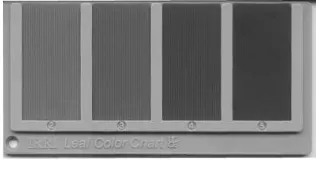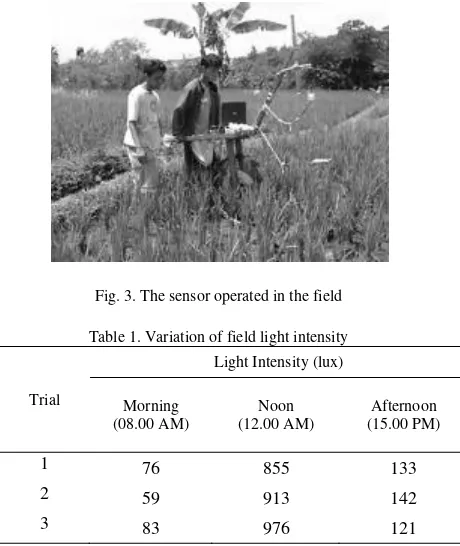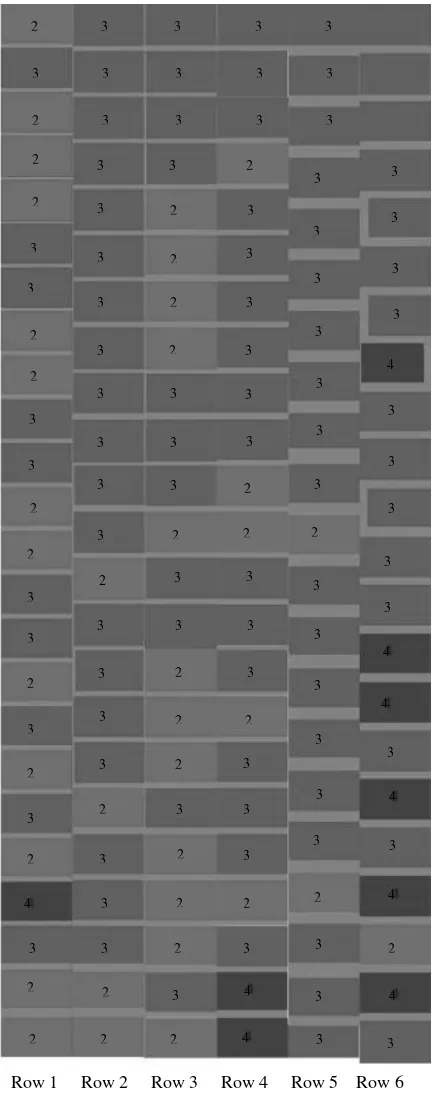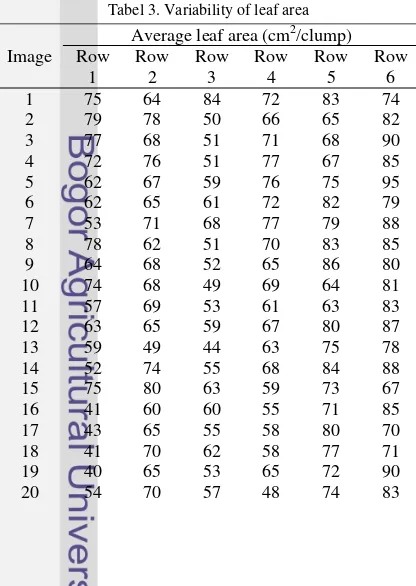INTERNATIONAL CONFERENCE ON ROBOTIC
AUTOMATION SYSTEM
The 1st International Conference on Robotic Automation System 2011 is a forum for scientists,
engineers, and practitioners to present their latest research results, ideas, developments and
applications in the areas of Robotics, Artificial Intelligence Method & Applications, Mechatronics
System & Automation and Biomedical Engineering.
PATRON
Dr Rozailan Mamat @ Ibrahim
(Rector, TATIUC)
ADVISORS
Prof. Dr Sazali Yaacob (UNIMAP)
Prof. Dr Yoshiko Nomura (MIE University)
Associate Prof. Bhaskar Sen Gupta (Queen’s University Belfast) Prof. Dr Ir. Anas m Fauzi (Institut Pertanian Bogor)
GENERAL COMMITTEE
Dr Zunaidi Ibrahim
(General Chair)
Mohamad Redhwan Abd. Aziz
(Deputy General Chair)
CONFERENCE SECRETARIAT
Dr Rosliza Ramli (General Secretary) Dr Ahmed Hamood Dabwan Dr Nor Bahiyah Baba Ir. Mohd Habir Ibrahim Amelia Ahmad Nawawi Amarah Abdul Karim Hamdan Azmi Abdul Aziz Kamrol Amri Mohamed Mohd Hanipah Muda
ICORAS 2011 COMMITTEE
Samsi Md. Said Dr Suditama Sulaiman Ahmad Shahrizan Abdul Ghani Damhuji Rifai
Kharudin Ali Ng Yian Ying
Noraznafulsima Khamshah Nur Najmiyah Jaafar Nor Hana Mamat Syahidatu Syima Syafie Zulkifli Ismail
ADVISORY COMMITTEE
Prof. Dr Ir. Anas m Fauzi (Indonesia) Prof. Dr Ir. Bustami Syam (Indonesia) Prof. Dr Kobayashi (Japan)
Prof. Dr Ir. Bustami Syam (Indonesia) Prof. Dr Ary Setijadi Prihatmanto (Indonesia)
Prof. Dr Ir. Arief Syaichu Rohman (Indonesia)
Prof. Dr Marzuki Khalid (Malaysia) Prof. Dr Masataka Kubo (Japan) Prof. Dr Mohd Yusoff Mashor (Malaysia) Prof. Dr Sazali Yaacob (Malaysia) Prof. Dr Shamsudin Amin (Malaysia) Prof. Ju-Jang Lee(Korea)
Prof. Dr Nobuyuki Imanishi (Japan)
Assoc. Prof. Dr Ahmed N. Abdalla (Malaysia)
Dr Ir. Desrial (Indonesia) Dr Elango Natarajan (Malaysia) Dr Kamarul Hawari Ghazali (Malaysia) Dr M Faiz Syuaib (Indonesia) Dr Mohammad Arifur Rahman (India) Dr Phil Hackney (UK)
Dr Sam Herodian (Indonesia) Dr Shahriman Abu Bakar (Malaysia) Dr Ting Hua Nong (Malaysia) DrZeyad Alfawaer (Lebanon) Izadora Mustaffa (Malaysia) Nurul Fajar Abd Manap (Malaysia)
CO-ORGANIZERS
Institut Pertanian Bogor, Indonesia. MIE University, Japan.
Queen’s University Belfast, UK.
COPYRIGHT
ICORAS 2011
International Conference On
Robotic and Automation System
23-24 May 2011
Terengganu, MALAYSIA
P
I nt e rna t iona l Confe re nc e on Robot ic Aut om a t ion Syst e m (I CORAS 2 0 1 1 )
Digital Camera Based Color Sensor for Determining Leaf
Color Level of Paddy Plants
I.W. Astika1, M. Solahudin1, R. P. Setiawan1, M. F. Syuaib1, I. E. Nugroho1, M. Ardiyansah2
1
Department of Mechanical and Biosystem Engineering, Faculty of Agricultural Engineering and Technology, Bogor Agriculture University, Fateta Building, IPB Darmaga Campus, Bogor 16000, Indonesia
2
Department of Soil Science and Land Resources, Faculty of Agriculture, Bogor Agriculture University Faperta Building, IPB Darmaga Campus, Bogor 16000, Indonesia
Abstract — Determining leaf color level of paddy
plants is a practical way to decide fertilizing dosage. Currently the color level is measured by using a leaf color chart. Aiming at applying appropriate fertilizing dosage upon any specific locations in the field, the color levels of paddy plants across the field needs to be measured. A charge couple device (CCD) camera based sensor was developed in this research to determine the leaf color levels of paddy plants by referring to the 4 levels IRRI leaf color chart (LCC). The sensor is driven by a laptop computer mounted on a single wheeled chart, pulled manually across the paddy field. During the traffic, the camera periodically captures each 115 cm x 98 cm field area from 140 cm above the ground, saved into a VGA sized JPG image. Another computer program then recognizes the color levels of all captured images, and then finally plots them in a spatial map. The accuracy of the recognition were 33.4% for color level 2, 100% for color level 3, and 67% for color level 4. Some obstacles were still found, such as the wheel slip during the traffic, the varying light intensity during the day, and the vibration during the traffic which reduce the sharpness of the images.
INTRODUCTION
Aligned with the goal of precision farming, that is to apply the proper amount of fertilizer into the field, Indonesian government is currently promoting the efficient use of inorganic fertilizer. The reason is that
dosage. This method has been applied and tested to be a useful and practical method by [1] and [2].
The LCC is printed on a plastic plate having 4 or 6 color levels. The most popular one is the 4 levels – IRRI (International Rice Research Institute) LCC (Fig. 1). The color level of a paddy leaf is determined by comparing its color with the colors in the LCC, and the most similar color becomes the color level of the leaf. The proper fertilizing dosage is determined by reading the receipt table on the reverse side of the LCC plate.
Fig. 1. The IRRI 4-level leaf color chart
I nt e rna t iona l Confe re nc e on Robot ic Aut om a t ion Syst e m (I CORAS 2 0 1 1 )
CCD camera, the laptop computer, and the LCC. The
magnetic trigger has 8 magnets separated 45o along
the wheel, so that it will trigger the camera at every 22.4 cm traveling distance. Each magnet can be set active or inactive in order to adjust the proper triggering period. The physical design of the sensor is shown in Fig. 2.
Fig. 2. The physical design of the color sensor
The wheel as well as the LCC are placed at the center of the body travelling between the plant rows. The height of the CCD camera is set at 140 cm above the ground in order to have a wide snapshoot and not to interfere the paddy plants. With the setting, the size of the snapshoot area is 115 x 98 cm, and in accordance, only two magnetic triggers were activated.
At every snapshoot, the paddy plants, as well as the standard LCC, are captured by the camera. The captured image is saved in a VGA size (640x480) image file. A computer program is then compares the color of paddy leaves with the 4 color levels in the LCC image by calculating the Eucledian distances upon RGB color components. The closest color level becomes the color level of the paddy leaves for that image. From an image file an average of color level is produced representing the color level of the corresponding grid in the field. The color levels of all grids are then arranged composing a spatial color level map. The map indicates the varying plant fertility and, accordingly, indicates the needs of fertilizing dosage.
PERFORMANCE OF THE SENSOR
The sensor was tested on several field blocks. It is pushed or pulled between rows of paddy plants (Fig. 3). Later it was found that pulling the cart is easier
than pushing it although the operator should sometimes turn his face back in order to have the proper traveling path.
Sun light intensity was found to affect the brightness of the image. The variation of light intensity was observed in three time point as shown Table 1. Upon the measurement time in the field, three levels of thresholding levels were applied in the image processing. This is an unavoidable fact that the brightness of the image is set automatically by the CCD camera.
Fig. 3. The sensor operated in the field
Table 1. Variation of field light intensity
Trial
Light Intensity (lux)
Morning
An image covers four rows of plants with an average of 20 plant clumps as shown in Fig. 4. The computer program thresholds the pixels in the image with a certain preset R, G, B constants which were found by trial and errors. As mentioned above, there were 3 sets of thresholding constants applied in the program depending on the field measurement time: morning, noon, and afternoon. The thresholding process separates the object pixels (leaf pixels), the LCC pixels, and other pixels (land surface, LCC frame, and plant shadow).
I nt e rna t iona l Confe re nc e on Robot ic Aut om a t ion Syst e m (I CORAS 2 0 1 1 )
Fig. 4. Computer program display
I nt e rna t iona l Confe re nc e on Robot ic Aut om a t ion Syst e m (I CORAS 2 0 1 1 )
results of sensor measurement with those of manual measurement. The inconsistency of the camera in capturing the colors of leaves and the colors in the LCC seems to be the main factor affecting the accuracy. In different capturing angle (as it is difficult to keep the camera position during the traffic), the same colors can be projected as different colors by the camera. Color level 2, which is the most brightest color, seems to be affected the most. The second factor is the vibration. As the CCD camera automatically sets the shutter speed and the diaphragm, the shutter speed is sometimes set to low under dark scene, so that blurred picture is produced by the moving camera. This also reduces the accuracy during the color detection.
Tabel 2. Accuracy of the color sensor
Standar
Apart from determining leaf color levels, determining the area of plant leaves is also an important indicator in evaluating the growth of plants. The area of plant shoots were also calculated in this research by calculating the number of leaf pixels, and then divided by the number of plant clumps in the image frame. Table 3 shows an example of field measurement results. Similar to the problem faced in color level measurement, some blank area were also found due to hardly rotating wheel problem.
Tabel 3. Variability of leaf area
Image
Average leaf area (cm2/clump) Row
CONCLUSIONS AND SUGGESTIONS
The color sensor developed in this research mainly consists of a CCD camera, a magnet to trigger the camera, a laptop computer to save and process the image, a leaf color chart as the color reference, and a cart to manually transport the sensor across the field. The sensor has been able to determine the color level of paddy plants with the accuracy 39% for color level 2, 62% for color level 3, and 66% for color level 4. The low accuracy is mainly caused by inconsistency of the camera in capturing the colors and the vibration during the transport. The wheel design also rises a problem as it sometimes doesn’t rotate in the mud so that the magnet doesn’t trigger the camera.
ACKNOWLEDGEMENTS
The authors would like to thank the IMHERE Project of The Indonesian Ministry of National Education for funding this research project and to Department of Mechanical and Biosystem Engineering, Faculty of Agricultural Engineering and Technology, Bogor Agricultural University for providing instruments and facilities used in this research.
REFERENCES
[1] Z. Islam, B. Bagchi, M. Hossain. “Adoption of leaf color chart for nitrogen use efficiency in rice: Impact assessment of a farmer-participatory experiment in West Bengal, India”. Field Crops Research vol. 103, pp 70– 75, 2007.
[2] V. Singh, Y. Singh, B. Singh, H.S. Thind, A. Kumar, M. Vashistha. “Calibrating the leaf colour chart for need based fertilizer nitrogen management in different maize (Zea mays L.) genotypes”. Field Crops Research Vol. 120, pp. 276–282, 2011.
[3] N. R. Rao, P. K. Garg, S.K. Gosh, V. K. Dadhwal. “Estimation of leaf total chlorophyll and nitrogen concentrations using hyperspectral satellite imagery”.



